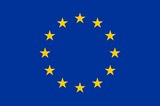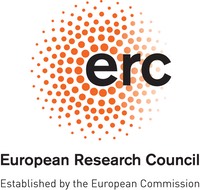WP1: Development of a coupled COS–CO2 atmospheric model
Activity 1.1: Implement soil–atmosphere exchange in SiB4
Recent findings of COS exchange with the terrestrial biosphere revealed that current approaches [Berry et al., 2013; Launois et al., 2015a; Wang et al., 2016] have shortcomings, especially for soil–atmospheric exchange [Maseyk et al., 2014; Sun et al., 2016; Whelan et al., 2016]. Figure 3 above clearly shows that the modelled COS drawdown over the USA is too strong, possibly related to a too strong soil uptake (Ivar van der Velde, personal communication). In this activity, I will implement recent parameterisations of soil–atmosphere COS exchange [Sun et al., 2015; Ogée et al., 2016] in the SiB4 biosphere model. Former PhD Ivar van der Velde implemented plant COS uptake in the SiB4 model, and SiB3 has been used in recent COS studies [Berry et al., 2013; Kuai et al., 2015; Wang et al., 2016]. Recently, the land-atmosphere exchange of COS [Sun et al., 2015] has been coupled to SiB3 and a publication is in preparation (U. Seibt, personal communication).
Activity 1.2: Implement COS isotopologues & stratospheric removal
In this activity, the TM5 model for the carbon cycle [Peters et al., 2010; Laan Luijkx et al., 2015] will be extended with COS & isotopologues simulation capabilities. Chemical sinks (OH, O(1D)) will be implemented using prescribed fields also used for CH4 simulations [Houweling et al., 2014] and published rates and isotopic fractionation constants [Hattori et al., 2012; Schmidt et al., 2012]. Implementation of photolysis frequencies and related COS fractionation requires special attention and will follow [Schmidt et al., 2013]. Oceanic sources from Launois et al. [2015b] and anthropogenic sources from Campbell et al. [2015] and Du et al. [2016] will be implemented. Required source signatures of COS isotopologues will first be inspired from Krouze and Grinenko [1991], while later in the project information from WP2 will be used. Exchange with the terrestrial biosphere will be based on Activity 1.1. This activity will result in an atmospheric transport model that simulates CO2, COS, and its isotopologues. Simulated mixing ratio variations of CO2 and COS will carry signatures of the underlying SiB4 biosphere model that simulates the joint exchange of these tracers. This coupled response to GPP and biosphere respiration has recently been used to evaluate dynamic global vegetation models [Launois et al., 2015a; Wang et al., 2016] and will be used in WP3 to constrain GPP and SSA formation.
Activity 1.3: Evaluation COS simulations
This activity will evaluate COS simulations, including its isotopic composition, in the troposphere and the stratosphere, performed for the period 1990–now. Use will be made of available COS observations from surface networks, campaigns, ground-based and satellite remote sensing (see section COS observations and modelling for an overview). Focus will be on the stratosphere (how much COS is destroyed in the stratosphere and how much flows back to the troposphere?) and the terrestrial biosphere (how much COS is taken up by plants and soils?). Particular attention will be given to the evaluation of the COS isotopologues, a unique aspect of this project. For this, measurements from WP2 are required, but first evaluations in the stratosphere using ACE-FTS isotopic information are already possible. I repeat that currently only one tropospheric data point for δ34S-COS is available (4.9 ± 0.3‰, [Hattori et al., 2015]).

